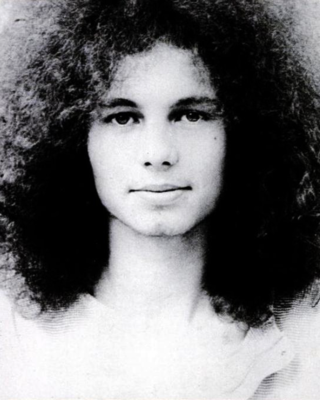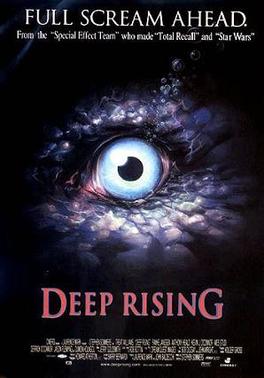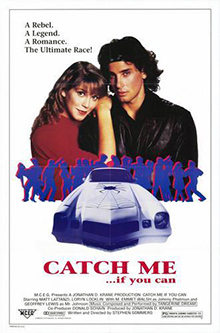Roger Sommer may refer to:
Roger Sommer may refer to:

The Mummy is a 1999 American action-adventure film written and directed by Stephen Sommers, starring Brendan Fraser, Rachel Weisz, John Hannah and Arnold Vosloo in the title role as the reanimated mummy. It is a remake of the 1932 film of the same name. The film follows adventurer Rick O'Connell as he travels to Hamunaptra, the City of the Dead, with librarian Evelyn Carnahan and her older brother Jonathan, where they accidentally awaken Imhotep, a cursed high priest with supernatural powers.

Pierre Raymond Sommer was a French racing driver. He raced both before and after WWII with some success, particularly in endurance racing. He won the 24 Hours of Le Mans endurance race in both 1932 and 1933, and although he did not reach the finishing line in any subsequent appearance at the Le Mans, he did lead each event until 1938. Sommer was also competitive at the highest level in Grand Prix motor racing, but did not win a race. He won the French Grand Prix in 1936, but the event that year was run as a sports car race.

Christina Marie Hoff Sommers is an American author and philosopher. Specializing in ethics, she is a resident scholar at the American Enterprise Institute. Sommers is known for her critique of contemporary feminism. Her work includes the books Who Stole Feminism? (1994) and The War Against Boys (2000). She also hosts a video blog called The Factual Feminist.

Van Helsing is a 2004 action horror film written and directed by Stephen Sommers. It stars Hugh Jackman as monster hunter Van Helsing and Kate Beckinsale as Anna Valerious. Van Helsing is both an homage and tribute to the Universal Horror Monster films from the 1930s and 1940s, of which Sommers is a fan.

Elke Sommer is a German actress. She appeared in numerous films in her heyday throughout the 1960s and 1970s, including roles in The Pink Panther sequel A Shot in the Dark (1964), the Bob Hope comedy Boy, Did I Get a Wrong Number! (1966), Agatha Christie's And Then There Were None (1974), and the British Carry On series in Carry On Behind (1975).

Bert Sommer was an American folk singer and songwriter. He appeared in the musical Hair and at the Woodstock Festival, and he released several albums as a singer-songwriter.

Deep Rising is a 1998 American action horror film written and directed by Stephen Sommers and starring Treat Williams, Famke Janssen and Anthony Heald. It was distributed by Hollywood Pictures and Cinergi Pictures and released on January 30, 1998. While the film was a critical and box office failure, it has been regarded as a cult film.
Sommer is a surname, from the German, Anglo-Saxon and Scandinavian languages word for the season "summer".

Joanie Sommers is an American singer and actress with a career concentrating on jazz, standards and popular material and show-business credits. Once billed as "The Voice of the Sixties", and associated with top-notch arrangers, songwriters and producers, Sommers' popular reputation became closely tied to her biggest, yet most uncharacteristic, hit song, "Johnny Get Angry".

Into the Now is the fifth studio album by the rock band Tesla. Following a six-year hiatus due to Tommy Skeoch's rehabilitation for drug abuse, Tesla reunited for this album released in 2004.
Jaime Sommers may refer to:
Sommers is a surname. Notable people with the surname include:

Eugénie Anne Claudine Le Sommer-Dariel is a French professional footballer who plays as a forward for French club Lyon and the France national team. She primarily plays as a creative attacking midfielder and left winger, but has also played as a second striker for her country.

Generation 13 is the eleventh studio album by Saga.

Catch Me If You Can is a 1989 American action comedy film starring Matt Lattanzi, Loryn Locklin, Grant Heslov, Geoffrey Lewis and M. Emmet Walsh. The film was the feature film directorial debut of writer and director Stephen Sommers, with a soundtrack by Tangerine Dream.
"You Debt Your Life" is the twelfth episode of the seventh season of American Dad!. It aired on Fox in the United States on February 20, 2011. The episode focuses on two of the show's main characters, Roger the Alien and Stan Smith. After he saves Roger from being run over by a bus, Stan has repaid what Hayley calls his "life debt", which forces Roger to moving out of the household, and Stan replaces him with Andy Dick. Roger intuitively figures out he can get reaccepted by Stan and move back in by forcing him into a new life debt, by getting him attacked by a polar bear at a zoo and then saving his life at Area 51. Meanwhile, Steve and his friends abuse the power of being public announcers at Pearl Bailey High School.
"Hurricane!" is the second episode of the eighth season of the animated comedy series American Dad!. It first aired on Fox in the United States on October 2, 2011. The episode's plot mainly revolves around the Smith family, who prepare for evacuation in response to an oncoming hurricane. Reluctant to leave his home, Stan encourages his family to ride out the storm in their house with him. The hurricane sends a flood to the city of Langley Falls, which puts the entire family in danger.

Roger Sommer was a French aviator. Born to Alfred Sommer, a Belgian industrialist, Roger Sommer became involved with aviation from an early age. He broke the record for flight duration in 1909. After this, Sommer began working on aircraft construction. He constructed 182 aircraft, making him a pioneer in the field. Sommer was a friend of Roland Garros. Sommer's company, named Sommer, is now a part of Sommer-Allibert. Roger Sommer was the father of former Formula One driver Raymond, and François and Pierre Sommer.

The Sommer 1910 Biplane was an early French aircraft designed by Roger Sommer. It was a pusher configuration biplane resembling the successful Farman III, and was built in large numbers for the time. One was owned by Charles Rolls.
Senator Sommer may refer to: